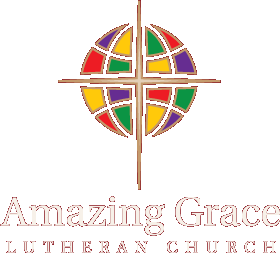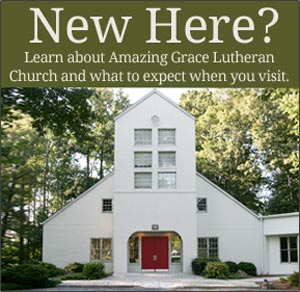
 Every year at the end of October we Lutherans celebrate our heritage on Reformation Sunday, which will be on Oct. 30th this year. Though the most important thing about our community is that it is Christian, we are Christian in a particular way as every church is. In this age where many churches pride themselves of being “non-denominational” we believe there is a value to identifying the tradition from which we came.
Every year at the end of October we Lutherans celebrate our heritage on Reformation Sunday, which will be on Oct. 30th this year. Though the most important thing about our community is that it is Christian, we are Christian in a particular way as every church is. In this age where many churches pride themselves of being “non-denominational” we believe there is a value to identifying the tradition from which we came.
Heritage is closely associated with identity. Lutheran heritage is rooted in an event called the Reformation, when over a period of time, the church was reformed due to a rediscovery of some basic truths. At that time some church traditions had evolved into non-Biblical practices. The Reformation emphasized a return to Scripture and that humans cannot earn Christ’s love, that it comes to us unconditionally. The Reformation had far-reaching effects, splitting the church in Europe and spawning new denominations from different countries.
At the forefront of it all was a group in Germany called “Lutherans”. What follows is an overview of some of the identifying characters and characteristics of the Reformation and Lutheranism.
The One Who Started the Reformation : Martin Luther
Martin Luther was a Roman Catholic priest in Germany in the 1500’s who questioned the church’s practice of selling indulgences, pieces of paper purchased to acquire forgiveness from Christ. On October 31st 1517, Luther nailed his 95 Thesis (a list of objections) to the door of All Saint’s Church in Wittenburg Germany. That sparked a longer and broader conversation in the church about tradition versus scripture. Eventually Luther was excommunicated from the Roman Catholic church. He and his followers started a new church, eventually they accepted the name others were calling them: “Lutherans”.
Founding Reformation Document – The Augsburg Confession
As Luther raised his concerns, some of the rulers of Germany were sympathetic to his cause. They presented a list of Reformation teachings to the emperor of Europe, Charles V at “diet” (meeting) in Augsburg, Germany. This document was called “The Augsburg Confession”, and it defined what Lutherans believed and taught. Specific aspects of the Confession (that is, “statement”) included theological statements and a list of those practices in the church that in their view needed correcting, including practices on communion, allowing clergy to marry, and ecclesiastical power.
Reformation Logo – Luther’s Seal
It was common in Luther’s time for public figures to have a personal seal, kind of like a coat of arms. As Martin Luther’s writings became more popular, his prince now called “Frederick the Wise” encouraged him to develop a seal. It is a rose with a cross in the center, all the elements and colors represent different principles of Luther’s teachings on grace and the Bible. Luther’s Seal has since become the “logo” of Lutheranism.
Reformation Song: “A Mighty Fortress is Our God”
In addition to being a pastor and professor, Luther also loved music. In the late 1520’s he wrote a hymn that quickly became popular during the Reformation. Based on Psalm 46, “A Mighty Fortress is Our God” speaks of the safety and comfort one finds in God during times of adversity. Known as the “Battle Hymn of the Reformation”, the hymn is always sung on Reformation Sunday and this year the hymn will be the subject of the sermon.
It is my hope that this article will give you cause to consider the importance of our heritage and to delve deeper into it. In an ever-shifting world, one can draw strength from the deep roots of tradition. At the heart of this discussion is not Martin Luther or Lutherans, but the love of Christ. It is this love that we celebrate in the Reformation, that it continually shapes and reshapes us as God’s people.
In His Service,
Pastor Jason Talsness
Posted September 30, 2011 by Amazing Grace Lutheran Church | Pastors Corner | Permalink |



